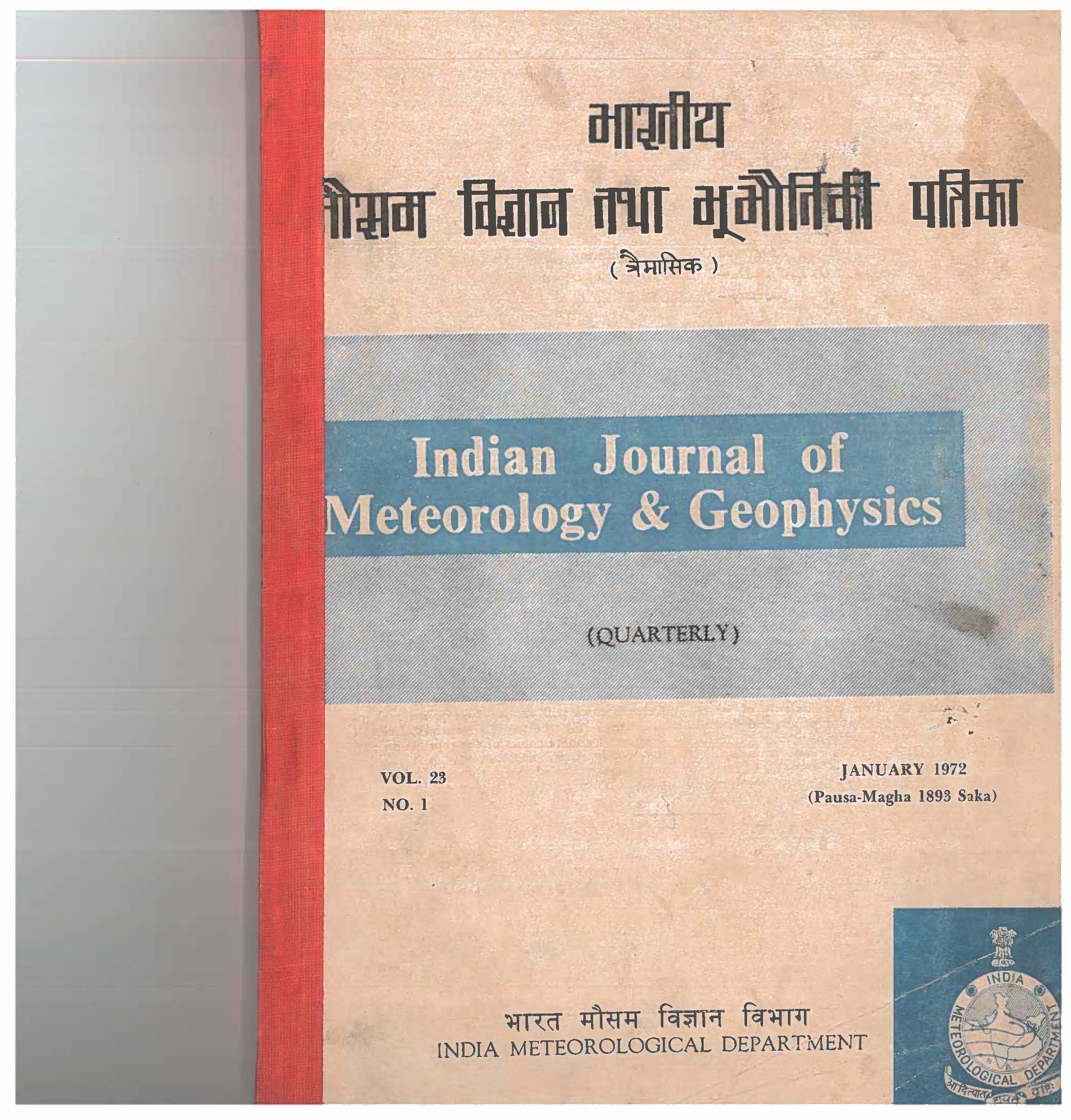The role of orography on wind and rainfall distribution in and around a mountain gap: Observational study
DOI:
https://doi.org/10.54302/mausam.v23i1.5125Abstract
A study of rainfall distribution along the 30 km wide Palghat Gap (Lat. 10046’) at about 97 m above mean sea level between Nilgiris (1 to 1.5km) shows the rainfall decrease gradually and continuously from the coast against the gap cross section. Along the sections north and south f the gap, the rainfall increases upto a certain height from the coast in the windward side and decreases gradually in the lee-side. It is seen that the percentage increase of rainfall at the mountain section with reference to the gap is about 100 per cent at a distance of 60 km from the coast and at a height of about 750 m and decreases thereafter before the peak of the barrier is reached. It is found also that the monsoon winds at the exit of the gap are twice or thrice of the wind speed at the gap.
Downloads
Published
How to Cite
Issue
Section
License
Copyright (c) 2022 MAUSAM

This work is licensed under a Creative Commons Attribution-NonCommercial 4.0 International License.
All articles published by MAUSAM are licensed under the Creative Commons Attribution 4.0 International License. This permits anyone.
Anyone is free:
- To Share - to copy, distribute and transmit the work
- To Remix - to adapt the work.
Under the following conditions:
- Share - copy and redistribute the material in any medium or format
- Adapt - remix, transform, and build upon the material for any purpose, even
commercially.



